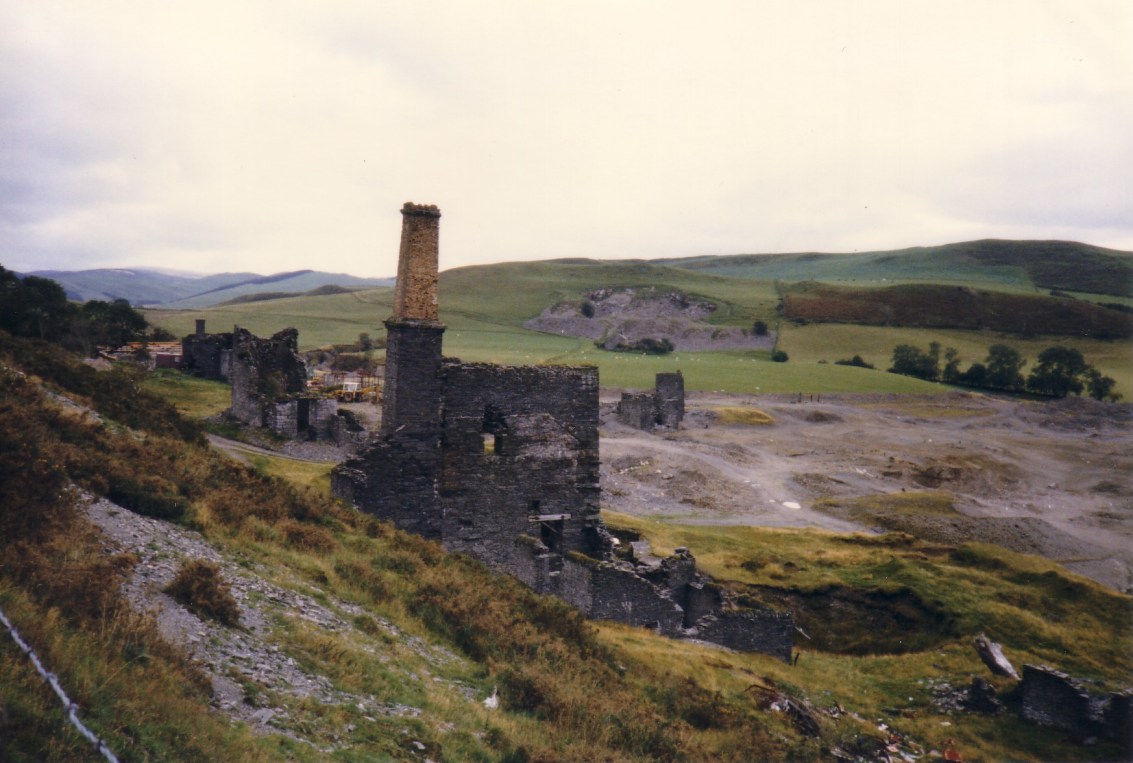In the hinterlands of North Ceredigion lie many ruins of a long lost industry. The crumbling grey walls of buildings with the occasional large mounds of grey stone. Small man-made lakes and miles and miles of water channels in the hillsides, all point to a part reclaimed industrial landscape.
These are testament to a concerted mining operation for base metals. At its peak, the North Ceredigion/West Montgomeryshire area had over 200 operations of various success and size. Within this number were many no-hope operations, using the success of a neighbouring mine to try and carve their fortune (normally on the back of other people’s money)
Frongoch was such a locality and became the mine with the highest production in the area. The chief ore was galena, from which lead was smelted. Within this ore, a small amount of silver was present, that could be successfully extracted. The other ore present was Sphalerite (also called Blende or Black), from which Zinc was extracted. The mines further north, around Talybont also had Chalcopyrite, from which copper was produced.
Frongoch itself lies on a minor road that runs south of Trisant, near Devil’s Bridge. Past a lake, once used for powering the mine, Frongoch is today a desert in a green landscape. Grey sand and stone peppered with the crumbling ruins of once proud buildings. Below it, a large processing plant was built, to process ore from the waste rock as far as possible, so that the heavy end product was as pure as could be as it was sent to the smelter in Belgium or Swansea. A very large grey sand dune lies testament to the processing power of the stepped building on the Cwmnewydion road.
To the East of here, lie other relics. The village of New Row is one of the few terraced house rows built for miners and their families in this area. Down the road, the ruins of a chapel stick out from the trees. Once an English Methodist chapel for the Cornish, it ended as an Italian Catholic church.
Further down again, the village of Pontrhydygroes rises up a steep road by the gorge at Cwmnewydion forest. A solitary waterwheel slowly turns near to the cafe wonderfully known as the ‘Cwtch’, a lasting memory of a feature once dotted across the countryside.
Frongoch was first worked in 1759 and in the 19th century, became one of the many owned and run with the Cornish expertise borne from Kernow’s own metal mines. As the owners moved in, so the miners came with them and Frongoch in the mid 19th Century was a predominantly Welsh and Cornish workforce.
The depression of the 1880s affected the lead mining industry leading to many closures and emigration. Frongoch survived, but became more reliant on its zinc production, the ore previously being tipped as waste. Zinc is a main component of brass and in galvanising steel, as the age progressed, it became more of a commodity.
By the end of the 19th century, the owner, John Kitto, was getting too old and with none of his family taking on the work, the mine was sold to a Belgian company who looked to modernise production through things like hydro electric power. Given the lack of labour in the area, they imported miners from Italy. The long term effect of this international operation though led to its collapse amid industrial and social unrest. The mine closed in 1903, but the spoil heaps were reclaimed for many years afterwards for their lead and zinc content.
More posts will follow, explaining in more detail the story and culture of this mine and the area in general. The attached image was from the website of the Welsh Mines Preservation Trust www.welshminestrust.org A group dedicated to the recording of mining archaeology, the secretary of which, Ioan Lord, has written two very good books on the Ceredigion mines: ‘Worn by tools and time’ and ‘Rich Mountains of lead’
